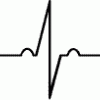Hi Guys,
Finally due to some complain I prefer to open a topic here where we will speak specially about beta-lapachone, the NQO1 master gene modulator. This mechanism will be further explained here to start with:
> For a fast review on this topic for those who doesnt know anything about beta-lapachone: http://www.beta-lapachone.com/
Now to enter deeper into the topic here is a quick summary I did on another thread:
from this : http://journals.plos...al.pone.0047122
I quoted some interesting part :
Thus, it is plausible that βL may mimic the mechanisms of CR by increasing NAD+/NADH ratio. While CR leads to an increase of NAD+ since a low glucose level resulted from low food uptake facilitates the production of ATP by oxidizing NADH to NAD+ [31], βL could directly facilitate the production of NAD+ through the oxidation of NADH by NQO1 [8](Fig. 1A). The increased NAD+ can act as a signaling molecule and activate diverse proteins that play a beneficial role in the control of glucose and lipid metabolism, which is eventually deregulated during the aging process [32].
The increased NAD+ by βL may also be associated with the activity of AMPK (Fig. 1B)
in this picture, you can see mitochondria structure was better looking in the BL group than the CR group !
you also see BL increased some important gene within the mitochondria such as SIRT1 and SIRT3 that seems to confirm the NAD+ increase.
note this article is from 2012, and the korean team performed another one in 2013 and moved further:
http://www.ncbi.nlm....MC3944666/#sup1
Thus, intracellular regulation of NAD+ levels through NQO1 activation might be a promising therapeutic target for the protection of cisplatin-induced acute kidney injury.
quinone oxidoreductase 1 (NQO1) is a cytosolic antioxidant flavoprotein that catalyzes the reduction of quinones to hydroquinones by utilizing NADH as an electron donor, which consequently increases intracellular NAD+ levels.18, 19 In addition, there is evidence that NQO1 has a role in other biological activities, including anti-inflammatory processes, the scavenging of superoxide anion radicals, and the stabilization of p53 and other tumor-suppressor proteins.20, 21, 22, 23, 24, 25, 26
the reference above 18 and 19:
http://www.ncbi.nlm....pubmed/11154736
http://www.ncbi.nlm....pubmed/11309386
Several activators of the NQO1 enzyme have been identified, of which β-lapachone is the best known.27, 28
We found that βL protects against cisplatin-induced renal dysfunction and that this effect is mediated by Sirt1 and Sirt3 through NQO1 activation
and indeed if you read the full study they found out BL induced again SIRT1 and SIRT3
Recently, numerous studies have reported that the enzymatic activation of NQO1 by βL mediates the beneficial effects on features of metabolic syndromes, including aging, obesity, hypertension, arterial restenosis, and salt-induced renal injury,30, 31, 33, 34 raising the possibility that intracellular NAD+ increase through NQO1 activation may be a potential therapeutic target for treating various diseases. In this report, we investigated whether NQO1 enzymatic activation by βL ameliorates cisplatin-induced renal changes.
and the most interesting part :
Interestingly, the major reason for the cellular change in the NAD+/NADH ratio by βL in WT mice is not the reduction in NADH but the increase in NAD+ levels (data not shown)



























































